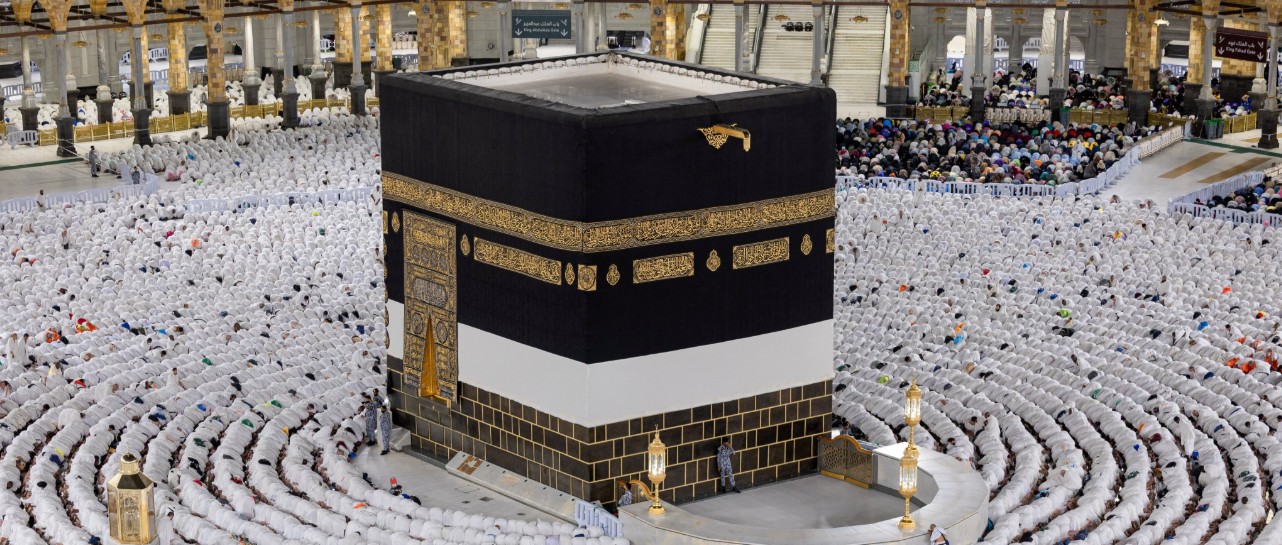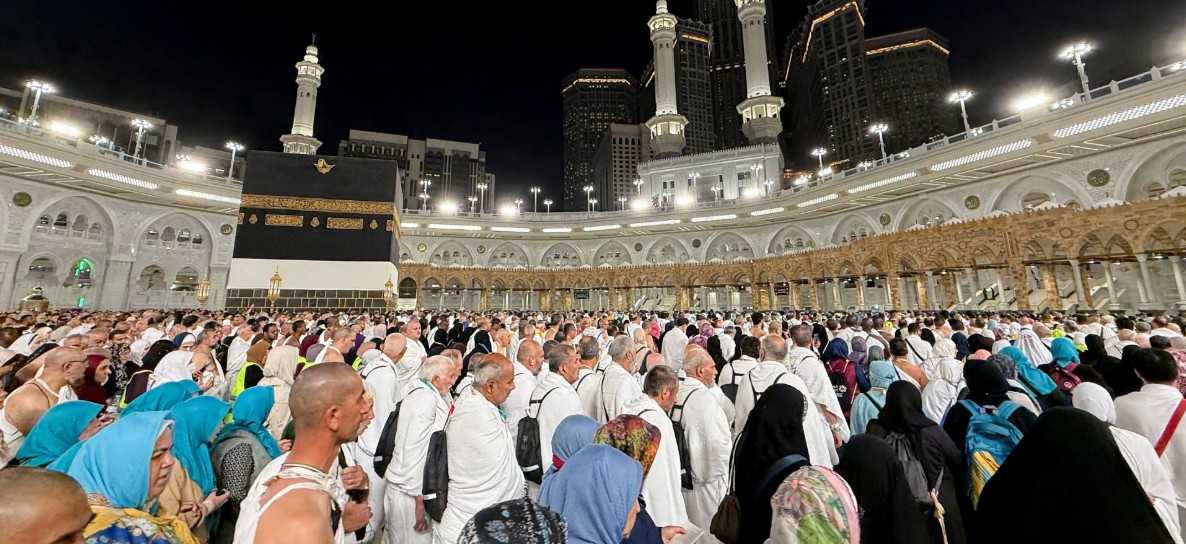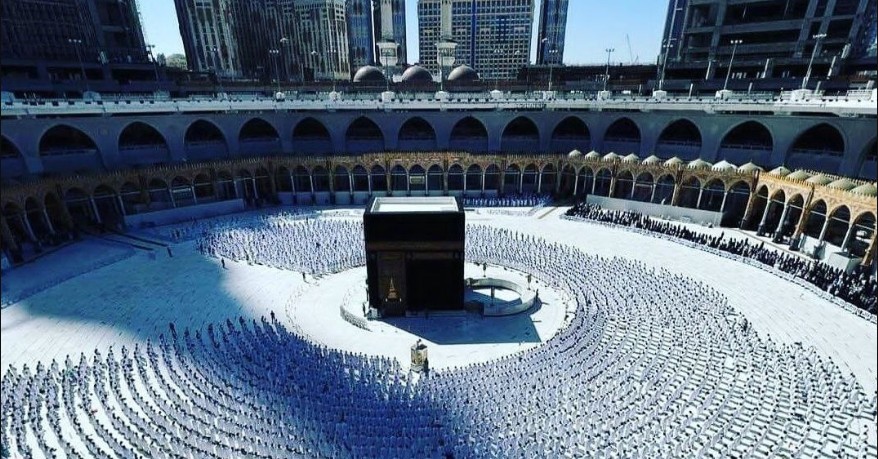What is Hajj? Understanding the sacred journey millions of Muslims make each year

The pilgrimage follows a specific set of rituals and is carried out in and around the holy city of Mecca in Saudi Arabia.
Each year, more than two million Muslims from around 188 countries travel to Mecca in Saudi Arabia to perform Hajj, a sacred pilgrimage and one of the five pillars of Islam.
Hajj takes place during the Islamic month of Dhul-Hijjah.
More To Read
- 5,000 Kenyan Muslims to take part in 2026 Hajj pilgrimage
- Sudan’s rebel force has declared a parallel government: What this means for the war
- Stephen Munyakho recounts how he narrowly escaped execution in Saudi Arabia
- Munyakho: Blood money demand dropped from Sh400 million to Sh150 million after court intervention
- Stephen Munyakho, Kenyan man on death row in Saudi Arabia, freed- PS Sing’Oei
- Saudi Arabia’s ‘Sleeping Prince’ dies after 20 years in coma
In 2025, it is expected to begin on the evening of June 6 and last for five to six days. The pilgrimage follows a specific set of rituals and is carried out in and around the holy city of Mecca in Saudi Arabia.
Preparation and arrival
Before travelling, pilgrims often attend educational sessions to learn the steps of the Hajj. They also prepare physically and mentally.
Many arrive in Saudi Arabia days or weeks in advance.
When pilgrims reach the Miqat, a designated entry point near Mecca, they enter a state of ritual purity known as Ihram.
Men wear two white, unstitched cloths. Women wear modest clothing that covers the body, usually without specific colour requirements. In this state, certain actions such as cutting hair, clipping nails, and using perfumes are prohibited.
 Muslims arrive at the Grand Mosque in the holy city of Makkah, Saudi Arabia, on May 31, 2025, ahead of the annual Hajj pilgrimage. (Photo: X/Geo English)
Muslims arrive at the Grand Mosque in the holy city of Makkah, Saudi Arabia, on May 31, 2025, ahead of the annual Hajj pilgrimage. (Photo: X/Geo English)
Arrival in Mecca and first ritual
Upon entering Mecca, pilgrims go to the Grand Mosque, or Masjid al-Haram.
They begin with the Tawaf, which involves walking seven times around the Kaaba, the cube-shaped building at the centre of the mosque.
After Tawaf, pilgrims perform Sa’i, walking seven times between the hills of Safa and Marwah, which are inside the mosque complex.
These acts commemorate the search for water by Hajar, the wife of Prophet Ibrahim.
After completing Sa’i, pilgrims may trim or shave their hair if they are performing a lesser pilgrimage known as Umrah. Those who are continuing with Hajj wait in the state of Ihram for the next steps.
Day 1: Mina
On the 8th day of Dhul-Hijjah, pilgrims travel to Mina, a tent city located about 8 kilometres from Mecca. They spend the day and night in Mina, performing prayers and resting in preparation for the next day.
Day 2: Arafat
On the 9th day of Dhul-Hijjah, pilgrims travel to the plain of Arafat. There, they take part in the main ritual of Hajj, known as Wuquf, or standing at Arafat. From noon to sunset, they stand in prayer and reflection.
This is considered the most important part of the Hajj. Missing it invalidates the pilgrimage.
 Before travelling, pilgrims often attend educational sessions to learn the steps of the Hajj. (Photo: Courtesy)
Before travelling, pilgrims often attend educational sessions to learn the steps of the Hajj. (Photo: Courtesy)
Muslims around the world who cannot physically take part in the Hajj also spend this day engaged in prayer, fasting and supplication.
After sunset, pilgrims leave Arafat and travel to Muzdalifah, an open area between Arafat and Mina. There, they perform the evening and night prayers and sleep under the open sky. They also collect small stones for the next ritual.
Day 3: Stoning the pillars and Eid sacrifice
On the 10th day of Dhul-Hijjah, pilgrims return to Mina.
They take part in the ritual known as Ramy al-Jamarat, which involves throwing seven stones at the largest of three stone pillars called Jamarat. This act recalls the story of Prophet Ibrahim rejecting the temptations of Satan.
After the stoning, pilgrims perform an animal sacrifice, known as Qurbani. This act marks the Islamic festival of Eid al-Adha, which is observed worldwide.
The meat is distributed to the poor and needy.
Following the sacrifice, men shave their heads or cut their hair. Women cut a small portion of their hair. This act symbolises spiritual renewal. After this, pilgrims can leave the state of Ihram.
Many return to Mecca to perform another Tawaf, called Tawaf al-Ifadah, followed by Sa’i. These steps are essential for completing the pilgrimage.
Days 4 and 5: Continued stoning
Pilgrims spend two or three more days in Mina. Each day, they throw seven stones at each of the three Jamarat pillars.
This continues the remembrance of Prophet Ibrahim’s resistance to evil.
After completing the final stoning, pilgrims perform a farewell Tawaf in Mecca before leaving the city. This is known as Tawaf al-Wada’ and is required for all pilgrims who are not residents of Mecca.
 Sheikh Nahyan Bin Saif Al Nahyan, UAE Ambassador to the Kingdom of Saudi Arabia, inspects the UAE pilgrims' camps in the holy sites of Mina and Arafat on May 30, 2025. (Photo: Gulf Today)
Sheikh Nahyan Bin Saif Al Nahyan, UAE Ambassador to the Kingdom of Saudi Arabia, inspects the UAE pilgrims' camps in the holy sites of Mina and Arafat on May 30, 2025. (Photo: Gulf Today)
Health and safety measures
The Saudi authorities implement several health, crowd control, and transportation measures during the Hajj.
The country’s Ministry of Hajj and Umrah works with international agencies to ensure that pilgrims follow the guidelines. Vaccinations, permits, and health checks are often required.
Hajj is a religious journey that requires physical effort, discipline, and patience.
Each year, Muslims from across the globe come together in one of the world’s largest gatherings.
Despite differences in language, nationality, and background, the steps of Hajj are performed in unity, following a practice that dates back centuries.
Top Stories Today












































